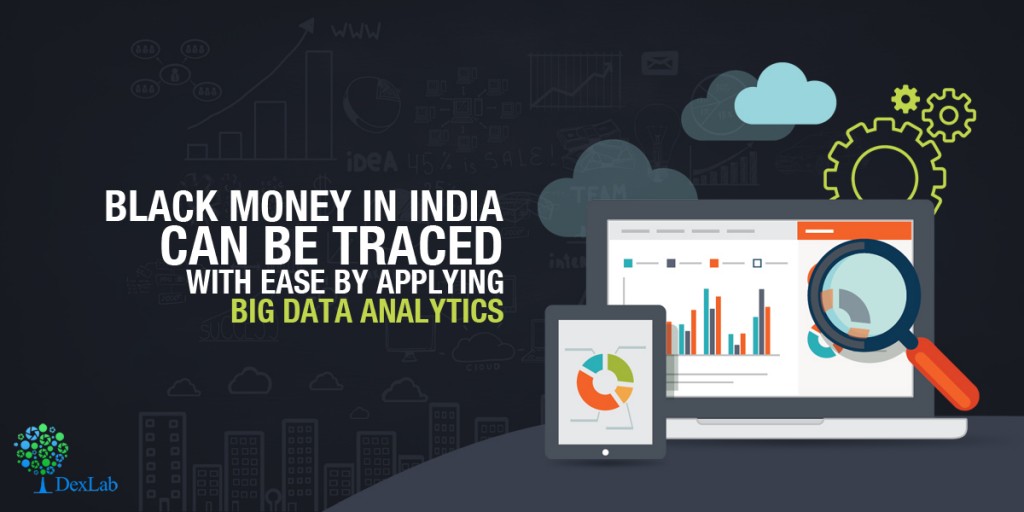The economy took a hit with the recent demonetization of the INR 500 and 1000 currency notes. The jury of economists around the world are still debating whether the move was good or not, but it has definitely caused a huge inconvenience for the public. Moreover, exchanging such a large amount of old currency notes is nothing shy of a mammoth Herculean task, as almost 85 percent of the economy is in the form of high denomination currency.
These measures have been taken by the government to curb the flow of Black Money in India and get rid of corruption from its roots. While there is still a mixed reaction from the common people about this move about it being good or bad, technological experts have a different viewpoint about preventing the flow of Black Money in the country. They say that with use modern technologies like Big Data Analytics it will be possible to trace Black Money painlessly and with much ease.
How can Big Data Analytics help trace black money and end corruption?
Here is how:
- Currency notes come with several identifying characteristics. They have a country identifier, denominations, a unique serial number and a mechanism to identify counterfeit notes. These are essential elements of a currency note and can be used to, easily capture fake notes in real time. Each time an unauthorised transaction takes place through any channel these above-mentioned details can be captured and the notes thereby traced to the end user point or to the account holder. Thus, allowing necessary measures to be taken against unscrupulous individuals.
- Cash counting and currency detection machines are frequently used in banks and other financial institutions. We can equip these machines with sensors to detect and store the serial numbers of the currency notes that run through them. Newer possibilities are continuing to emerge, as there are manifolds of increase in the number of available affordable sensors, which can collect and transmit data. With such advancements, we can allow our financial institutions to capture detailed data in the real time and at a reduced cost from sectors that were previously almost inaccessible. This will give rise to a tsunami of data with extremely high volumes of data being generated and collected.
- The tools associated with Big Data analytics are the best suited to process huge and complex data sets; this was not possible with the previously used traditional data processing methods. Data analytics can analyze and process such a mammoth amount of data sets to discover hidden patterns and trends along with unknown correlations, which may lead to the discovery of useful trends and tips. This will allow the financial institutions to leverage the same and describe transactions, predict financial fraud and improve detection and surveillance. The mathematical and statistical tools with their algorithm deciphering properties (to know where all this currency is coming from) will be able to make predictions (possible places where there could be cash hoards).
- Monetary malpractices can be tracked and detected better with analytics tools such SAS or R programming. In addition, can detect currency corruption using the infrastructure, thereby obviating the need to take such drastic steps, or purchase newer technologies or equipments. The existing infrastructure can be further accentuated to meet such necessities. The development of better analytics tools along with advanced storage capabilities it will be further easy to assess the flow of the currency. As there would be no time lag, the investigating agencies can better monitor any type of suspicious monetary transactions in real time.
- Several other parameters may be factored in to the analytics tools with proper calibration. Such as geographical locations, serial numbers, individual account details etc. With the use of data, meaningful insight can be retrieved and every transaction can tracked to the account holder or the end user point.
Big Data tools can be effective in collecting information about the financial misappropriation. The data with the banks can be analyzed to trace and sniff out any kind of unusual activity in the flow of currency, be it at an individual level or at a regional level.
Attend our demo session on all our course modules
Interested in a career in Data Analyst?
To learn more about Machine Learning Using Python and Spark – click here.
To learn more about Data Analyst with Advanced excel course – click here.
To learn more about Data Analyst with SAS Course – click here.
To learn more about Data Analyst with R Course – click here.
To learn more about Big Data Course – click here.
Analytics, Big Data, Big Data Analytics, Big data certification, Big data certification pune, Big data courses, big data hadoop, Big data training, news, online certification, online courses

Comments are closed here.